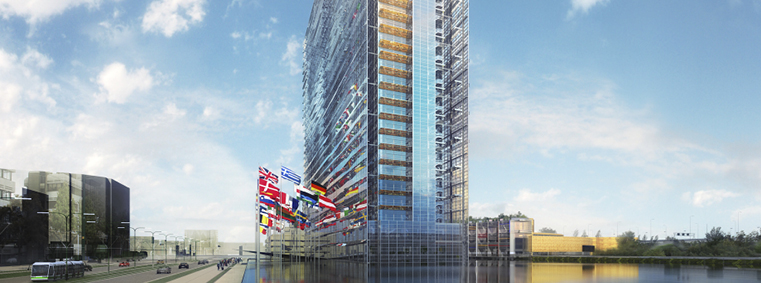
The statistics and indicators in the annual report demonstrate that 2017 was another positive year for the EPO and the European patent system. The Office received more patent applications than ever before, showing that we face a heavy and mounting workload, and that our services are in high demand. In response we increased our productivity and production, granting a record number of patents - proof that we are operating extremely well. This operational success translates into a growing interest from countries outside the European Patent Organisation to co-operate with the EPO. These developments not only testify to the outstanding work of the Office and our staff, but they are also indicative of persistent trends that have led the EPO to adapt services, procedures and, last year, our internal structure to respond to a rapidly evolving international patent system with a growing number of important actors among which the EPO needs to secure its position. The long-term strategy to enhance the competitiveness of the EPO and to embark on reforms that support our guiding policy of enhancing quality and efficiency, including such innovations as the introduction of effective IT tools and the improvement of our processes and performance-based career system, are now clearly bearing fruit.

Adapting the internal structure of our core business, the patent granting process, was a decisive step in ensuring the EPO appropriately reflects the changes in industry and its patenting activity, and that the Office is prepared for future tasks. Implemented last year, this internal re-organisation merged two former directorates general, integrating support staff (formalities officers) with teams of patent examiners to reduce "hand-over points" (when patent applications pass from one operational unit to another). The newly-structured DG 1 patent granting process is now responsible for the entire procedure from filing to granting and opposition. The internal changes also streamlined various stages of the patent granting process by bringing them under one line management. In addition, new specialised directorates now deal with opposition procedures, helping to improve both timeliness and coherence of the different decisions taken by the units.
The structural re-organisation and the earlier service-related and procedural reforms were necessary for several reasons. Firstly, the number of patent applications around the world has been growing from year to year, thus increasing demand for our services. Secondly, applications are becoming increasingly complex. Information and communication technologies, for example, have rapidly evolved from discrete areas to embrace many other sectors as diverse as medical technology and vehicles. We expect that by 2020 over 50% of all patent applications filed at the EPO will claim a computer-implemented invention. Foreseeing this trend, the pooling of competencies across all sectors at the Office has been a guiding principle to secure our position as a leading patent office on a lasting basis. Thirdly, the EPO is operating in a competitive environment where patent practices and capacity to handle applications vary from one body to another. By bolstering our internal structures we strengthen our competitive edge. And finally, applicants expect timely and cost-efficient services, while the patents they receive remain of the highest standard.
In implementing the re-organisation and reforms, the Office has taken care not to increase the burden on innovation in Europe, and has controlled costs more effectively. For example, our unit costs have declined and the total staffing level has remained stable, while the actual share of examiners has increased. With lower costs expended per treated file, the Office is delivering more to its users for the same fees. The gains and associated benefits also enable us reduce certain fees effective April 2018. Taking into account the growing use of the international PCT route as applicants' prime path for filing applications, we are reducing these costs to encourage users to employ our services. The combined effect of all reduced fees is estimated to result in a total of EUR 25 million in savings for the user community in 2018 alone.

With the re-organisation in place, we look forward to a number of significant EPO projects. In 2018 we will inaugurate our new building in The Hague. The building stands as a symbol of our investment in our people, the country in which we have a long-standing history and our efforts to ensure the Office is well equipped to deliver the services our users need. Further, this could be the year that the Unitary Patent finally enters into force. And 2018 will be a year in which our Office aims to develop proposals for introducing more flexibility into the timing of our patent granting processes. We are also moving towards a fully digitalised end-to-end "EPO 4.0", the next step in developing our business model to remain the competitive intergovernmental organisation we are today.